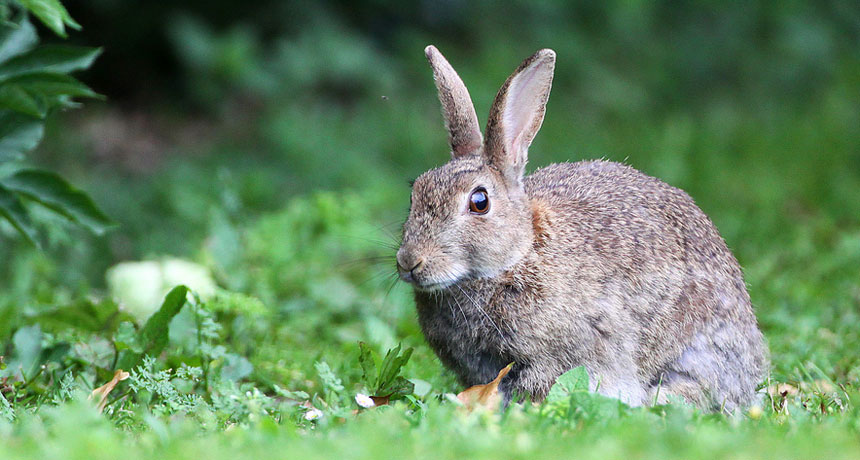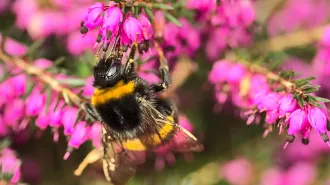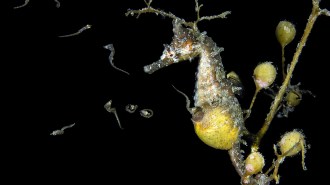Children’s classic ‘Watership Down’ is based on real science

Richard Adams incorporated the burrowing behavior of the European rabbit into his novel Watership Down.
Mark Philpott/Flickr (CC-BY-NC 2.0)
- More than 2 years ago
In the mid-1950s, naturalist Ronald Lockley undertook a study on behalf of the British Nature Conservancy, which was concerned about the spread of a rabbit disease called myxomatosis. In a grassy meadow in Wales, Lockley created several enclosures in which tagged European rabbits lived. But rabbits spend much of their lives underground, in a mass of tunnels and rooms known as a warren. So Lockley also created an artificial warren that backed up against a small hut with a plate glass window that let an observer see what the bunnies were doing. And for four years, Lockley recorded interactions among his rabbit subjects.
The result was the first study of life in a rabbit warren, published in the Journal of Animal Ecology in 1961. But soon Lockley, a prolific writer, expanded his findings into a book, The Private Life of the Rabbit, published in 1964. Within the warren, Lockley had discovered a complex society, headed by a dominant male and female who were given precedence by lower-ranked animals. The two were mates, and the top female got the best spot in the warren for her offspring. Dominance was related to age, Lockley found, and rarely did a rabbit reach the top spot before 18 months old. And the male kept his position by patrolling the group’s territory and putting on displays of aggression — or even fighting — to keep the others in line.
The complex behavior found in rabbit warrens was unknown when this education film, produced by the British Council, was released in 1945.Tomorrow Always Comes/YouTube |
Lockley’s work was an important addition to the science of rabbits, and it would soon become immortalized in fiction. When Englishman Richard Adams sat down to write a children’s tale about a group of bunnies, he turned to The Private Life of the Rabbit “to make the rabbits as convincing as possible,” he wrote in an introduction to his book, Watership Down, published in 1972.
For those of you who last read Watership Down in middle school, the book is the tale of a group of rabbits as they leave their home warren, which was soon to be destroyed, to make a new home on the land known as Watership Down, a real hill in Hampshire, England, near where Adams grew up. The rabbits are anthropomorphized, and, as might be expected with a children’s tale, there is plenty that is not based in reality. Rabbit society, for instance, does not have a military caste.
But Lockley’s work had a profound impact on the book. Adams even consulted Lockley and asked the scientist to read a final draft. Lockley “contributed several good suggestions,” Adams noted in his introduction. “I remember, in particular, that he devised the passage … in which the rabbits raid Nuthanger Farm” and release some captive domestic bunnies.
The two became friends, and they would walk together through the countryside. They also traveled together to Antarctica (after which they co-wrote the book Voyage Through the Antarctic). Lockley would go on to write some 60 books, mostly about islands or birds, before his death in 2000. Adams, now 95, still writes every day, he told the Guardian earlier this year.
And scientists are still discovering more about the behavior of European rabbits. For instance, there is some evidence that not all rabbits may bother building complex warrens. Group living may be common only in exposed areas where predation risk is high. In such a situation, it can be dangerous for a rabbit to branch off the main group and build a new burrow. Sticking together and living in the existing warren is the safer choice. But when there is ground cover, rabbits can more easily split apart and build their own homes without being seen by something that considers a bunny an easy meal.
A few years ago, the BBC produced a series of nature shows that investigated the lives of three burrowing animals — badgers, water voles and European rabbits. To watch the rabbits, the producers built a warren, lining one end with glass through which they could film. In the show, the host claimed “this has to be the first time that any human being has had this sort of view of a rabbit warren underground.” Well, no, it wasn’t. And if we had to wait until now for such a view, we might not have the book that has entertained so many of us for decades.







